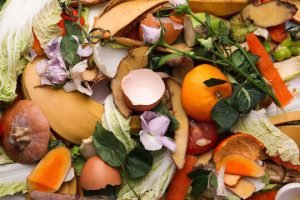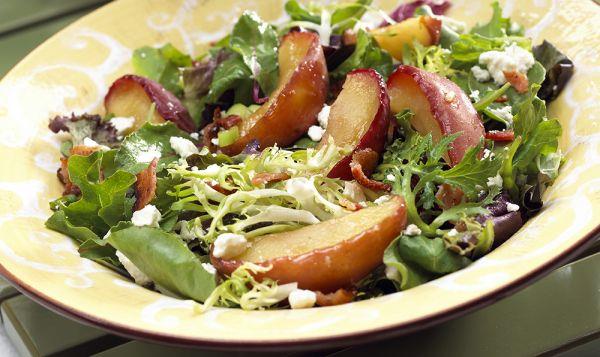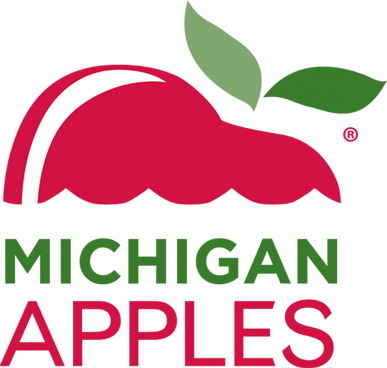Take Steps to Reduce Produce Waste
According to the USDA, up to 40% of food is wasted every year in the United States and the estimated cost of food and beverages thrown out by the average American family annually is over $1,500. Wasted food also means a waste of natural resources, water, and energy. Most people don’t realize how much food they throw away every day and fresh produce makes up much of the discarded food. The average American wastes about 20 percent of the vegetables and 15 percent of the fruits they purchase.

Farmers, like those who grow Michigan Apples, work throughout the year to ensure they have an optimal harvest, and although some unintended crop loss occurs as food moves from the farm to the supermarket, there are several steps we can all take to ensure the proper care of vegetables and fruits after they leave the store. Follow these steps to prevent excess produce waste:
1. Shop Wisely for Fruits and Vegetables
- Shop the refrigerator before going to the store. Use produce at home before buying more. Designate one meal weekly as a “use-it-up” meal.
- Only buy what is needed for your weekly meals. Don’t overbuy fresh produce items on sale unless can use or freeze them before spoiling. Also, remember that frozen and canned fruits and vegetables have lots of good nutrients and they’re great to have on hand when you’re low on funds or don’t feel like heading to the store.
- Many stores now sell imperfect or “ugly” produce for a lower cost, and they are just as tasty and nutritious! When it doesn’t matter if your produce looks perfect this can be a money-saving option.
- Check product dates on produce packaging. The United States Department of Agriculture/Food Safety and Inspection Service (USDA/FSIS) defines them as:
- A “Sell-By” date tells the store how long to display the product for sale. You should buy the product before the date expires.
- A “Best if Used By (or Before)” date is recommended for the best flavor or quality. It is not a purchase or safety date.
- A “Use-By” date is the last date recommended for the use of the product while at peak quality. The date has been determined by the manufacturer of the product. (Do not buy or use baby formula after its “use-by” date).
- Check the garbage can. If the same foods are constantly being tossed: Eat them sooner, buy less of them, or incorporate them into more recipes.
2. Practice Proper Produce Storage
- Keep an eye on your refrigerator. Make sure the oldest produce is upfront so you can incorporate it into recipes and meals to use it quickly.
- Find out how to store fruits and vegetables so they stay fresh longer inside or outside your refrigerator.
- Store any perishable fresh produce, such as berries and leafy greens, in a clean refrigerator set to 40°F or below. If produce is refrigerated at a grocery store, it generally should be refrigerated at home to maintain quality.
- Plan to use fruits such as apricots, blackberries, raspberries, and strawberries and vegetables such as herbs, sprouts, corn, cucumbers, eggplant, green beans, leafy greens, lima beans, mushrooms, peas, and summer squash within a couple of days of purchase.
- Some produce items give off ethylene gas during ripening, which can cause other produce items to ripen quickly if they are stored together. Produce that makes this gas at room temperature includes avocados, bananas, mangoes, nectarines, papaya, peaches, and tomatoes. In the refrigerator store apples, apricots, cantaloupe, figs, kiwis, honeydew melon, and plums in a drawer without vegetables and away from fruit that doesn’t need to ripen quickly.
- When a fruit or vegetable becomes properly ripened at room temperature, it can be refrigerated.
- Produce that has a longer shelf life can be used throughout the entire week or later. These include Michigan Apples, blueberries, grapes, pears, beets, artichokes, cabbage, carrots, celery, garlic, leeks, onions, parsnips, potatoes, and winter squash.
- Do not seal fresh produce in regular, air-tight plastic storage bags or containers — this starts the decaying process and promotes bacterial and mold growth.
3. Creative Prep with Fruits and Vegetables
- Rinse or scrub produce and consume the entire fruit or vegetable when possible. The skin from Michigan Apples, for example, provides healthy fiber and nutrients.
- Plan fruits and veggies into your meal plan and prepare only what is needed. You may only need half a melon for dinner but can save the rest for breakfast.
- Get inventive with the “extras”. An extra apple can be diced into a green salad and drizzled with a balsamic vinaigrette, or you could grate an apple into your pancake or muffin batter.
- If you’re unable to enjoy all of the fresh produce you have on hand, you can freeze or can them for the future using safe, up-to-date food preservation methods. Visit the National Center for Home Food Preservation website for freezing and canning instructions.
- If fruits and veggies start to get distressed you may still be able to make them a healthy part of meals. Apples, bananas, or other fruits can go into smoothies or vegetables could be roasted in the oven with a little olive oil, salt, and pepper – use as a side dish or in a wrap. Mash or grate fruit to add to quick bread recipes. Dice a Michigan Apple, mango, or peach into prepared salsa. Sauté nearly any veggie and toss with pasta or add as a topping to cheese pizza.
4. Compost the Scraps
- Compost food scraps for use in the garden. Visit the United States Environmental Protection Agency’s website for directions on creating compost at home.
Try these delicious recipes using Michigan Apples so you never have to waste a delicious bite:


Apples Roasted with Root Vegetables


